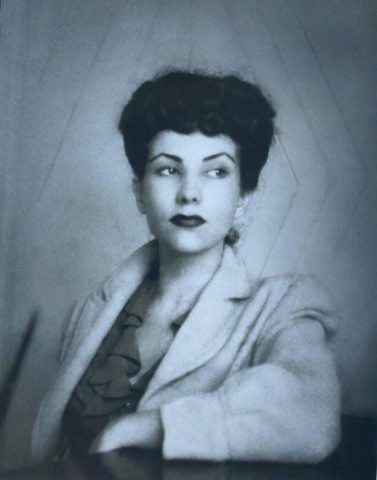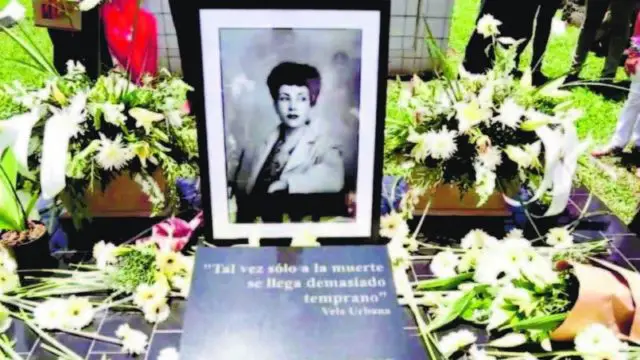Yolanda Oreamuno Unger was a Costa Rican writer (born in San José, Costa Rica, April 8th, 1916 – died in Federal District, Mexico, July 8th, 1956). Entrepreneurial and very successful woman, with only 16 years in 1932, she published an essay entitled ‘Can Women Have the Same Political Rights as Men?’ The great leap in her writing career was when she received, in 1948, recognition for the publication of her ‘The Route of Evasion” novel.
Her work was crossed by a political concern that involved a look at gender issues and problems in education. In just 40 years of life, mysterious and prolific Yolanda Oreamuno left a profound footprint for the second half of the 20th century in Costa Rica.

Being the only daughter Carlos Oreamuno Pacheco and Margarita Unger Salazar’s marriage, after her father’s death, when she barely was 1 year old, Yolanda was raised primarily by her maternal grandmother, Eudoxia Salazar Salazar, Unger’s widow.
According to her historian Raúl Arias, at the age of 7, she entered the ‘Girls High School’, which complemented with the ‘High School of Ladies’ the commitment to a comprehensive and humanistic education.
Since her teachers and literacy tools activated her creative genius, Oreamuno even told the journalist Adelina Zendejas that she began writing stories at the early age of 10.
In December 1933, after obtaining the titles of Bachelor of Science and Letters and Commercial Expert, she told the newspaper ‘The Tribune’ editors that would love to be a journalist and also added that she could type 56 words per minute.
She studied typing and secretarial skills. Yolanda Oreamundo is “a key personality in the Costa Rican female novel; the first writer who exposes and rebels against the situation of women in the society of the country of Costa Rica, in the first half of the 20th century”.
During a stay in Siquirres, her aunt Luisa Oreamuno noticed that around midnight there was light in the girl’s room, when she was about 18 years old. When she opened the door, her niece start recriminating her: “Oh, she killed me! Why did she come? I am writing and the inspiration went away”.

After finishing her studies, she worked in the ‘Correos y Telégrafos’ building, where the former Ministry of Finance was located. “Her youth was spent in friendships, on walks, sports, and her taste for very intimate cultural activities but of a high-level. Her character and beauty made her one of the most admired Costa Rican girls during this period”.
When she was 20, in 1936, she published her first story: ‘The Lizard of the White Tummy’, and also ‘To Revenar’, not for Max Jiménez.
At the Chilean embassy, where she worked, she met the diplomat Jorge Molina Wood, with whom she married and went to live in her country. In Chile, she writes the stories ‘Tides Come Back at Night’ and ‘Don Juvencio’, which would remain in the hands of Hernán Max and that would not be published until 1971.
But at the end of 1936, she returns to Costa Rica: her husband, victim of an incurable disease, had committed suicide. The following year, she married Óscar Barahona Streber, a sympathetic lawyer of the Costa Rican Communist Party. Soon, she came into contact with Marxist ideas and participated in anti-Franco and other defense activities of the Spanish Republic.
1937 was one of her most prolific years: her works appeared in the ‘American Repertoire’, a magazine published by Joaquín García Monge, who will become her teacher, editor, and friend. Among the stories that were published, ‘Figure 40º Above Zero’, ‘September 18th’, ‘Mass of Eight, ‘Urban Candle’, ‘The Spirit of My Land’, ‘Insomnia and The Black’, and ‘Sense of Joy’.
Her first novel, ‘On Land’, began writing in 1938 and in 1940 she sent it to a contest in which she shared the first prize with 2 other writers. Dissatisfied with this decision, she refused to send the manuscript for publication in New York and, finally, her work text was missed.
On September 21st, 1942, her only son, Sergio Barahona Oreamuno, was born, and that same year the relationship with her husband began to deteriorate, which would end up in divorce.

She travels to Mexico and then moves to live in Guatemala, where she acquires that nationality. Later on, in 1949, when seriously ill, she stayed 4 months in a hospital in Washington D.C. After that, she retires to Mexico and at the Costa Rican poet Eunice Odio’s home, she dies in 1956. She was buried in a pantheon in San Joaquín, D.F. But, in 1961 her mortal remains were transferred to San José, in the General Cemetery.
‘The Fugitive’ (2011), a novel written by Nicaraguan Sergio Ramírez, is inspired by Yolanda Oreamuno. In this work, we are presented with the life of Amanda Solano (Yolanda) through the memories of 3 friends.

